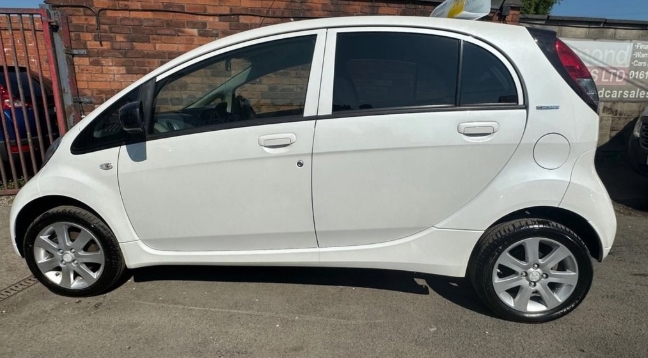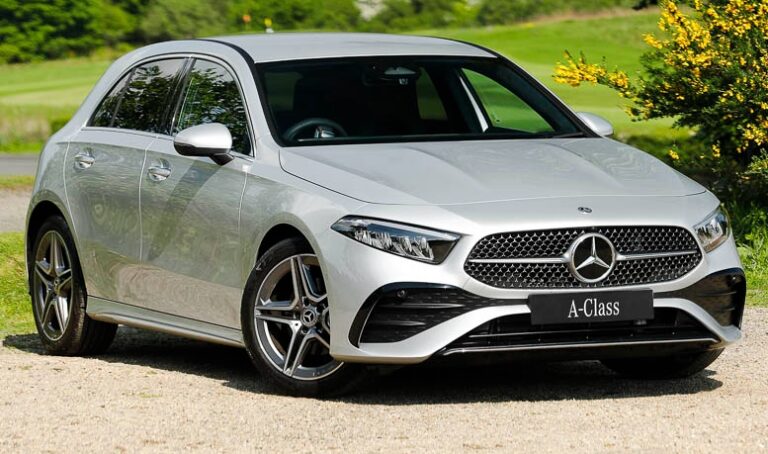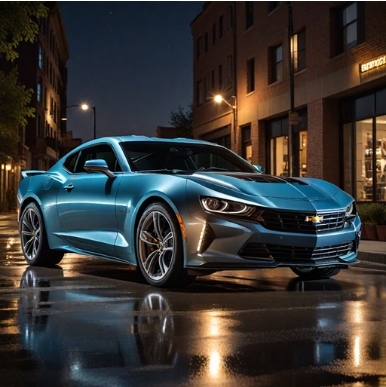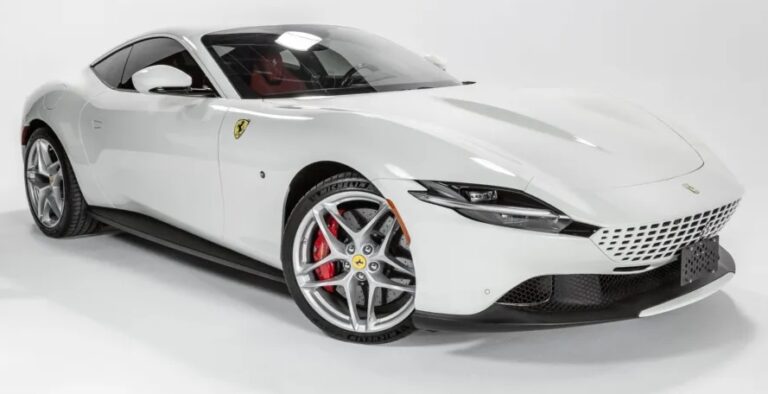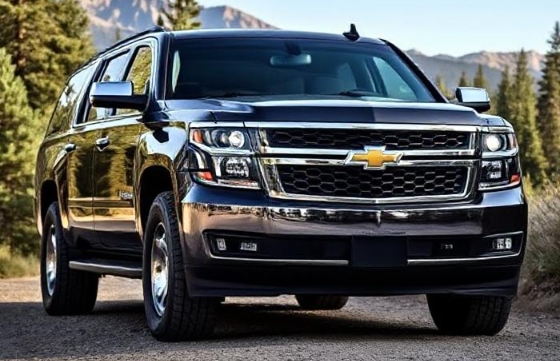The Quiet Revolution: Tracing the Evolution of the Peugeot iOn
In the burgeoning landscape of electric mobility, where innovation often arrives with a thunderclap, the Peugeot iOn represented a subtler, yet significant, shift. Though not a groundbreaking design from the ground up, the iOn played a crucial role as Peugeot’s initial foray into the mainstream electric vehicle (EV) market, offering a compact, city-focused solution for a world increasingly concerned with emissions and fuel economy. Its story is one of collaborative development, targeted market positioning, and a gradual evolution that, while perhaps not setting the automotive world ablaze, undeniably contributed to the broader acceptance of electric cars.
The genesis of the Peugeot iOn lies in a strategic partnership. In the late 2000s, as electric vehicle technology began to mature beyond niche prototypes, automakers recognized the need for shared development to mitigate the considerable costs and risks involved. Peugeot, along with its parent company PSA (Peugeot Société Anonyme) and Japanese manufacturer Mitsubishi Motors, forged an alliance. Mitsubishi had already established a significant presence in the micro-EV segment with its i-MiEV (Mitsubishi innovative Electric Vehicle), a vehicle first unveiled as a concept in 1995 and later produced in limited numbers. This existing platform provided the foundation for what would become the Peugeot iOn, the Citroën C-Zero (a sister model), and the Mitsubishi i-MiEV itself.
The Dawn of the iOn: 2010 – A Compact Spark
The Peugeot iOn officially entered the market in 2010. It was presented as a compact, four-door hatchback designed primarily for urban commuting and short-distance travel. Its defining characteristics were its diminutive size, its inherent maneuverability, and its zero-emission powertrain.
Model and Trim Levels (2010-2012):
During its initial years of production, the Peugeot iOn was offered in a singular, largely unfettered model. The emphasis was on its core electric offering, with luxury and extensive customization being secondary considerations.
Peugeot iOn (Base Model): This was the sole trim available. It came equipped with the essentials for electric city driving. The powertrain consisted of a 47 kW (64 hp) electric motor, powered by a 16 kWh lithium-ion battery pack. This configuration provided a modest top speed of around 130 km/h (81 mph) and an official range of approximately 150 km (93 miles) under the NEDC (New European Driving Cycle) standard.
Standard equipment typically included:
Power steering
Electric windows (front and rear)
Electric mirrors
Air conditioning
ABS (Anti-lock Braking System)
ESP (Electronic Stability Program)
Driver, passenger, and side airbags
A basic audio system with a CD player
15-inch steel wheels with wheel covers
While the iOn was presented as a singular offering, minor variations in optional extras might have been available depending on the specific market and dealership. However, there were no distinct “trim levels” in the traditional sense with tiered features. The focus was on the electric functionality.
.

.
The iOn Matures: 2013-2015 – A Refined Approach
As the EV market began to gain traction and consumer expectations evolved, Peugeot made subtle refinements to the iOn. The core mechanics remained largely the same, but there were efforts to enhance its appeal and practicality.
Model and Trim Levels (2013-2015):
The fundamental structure of offering a single model persisted, but Peugeot began to introduce slightly more defined equipment packages, often marketed under slightly different names or as part of optional packs.
Peugeot iOn (Updated Model): While still essentially the same vehicle, the 2013 update saw some minor tweaks. This could include slightly improved interior materials, a revised infotainment system (often a more integrated radio/CD player with a basic display), and potentially more standardized safety features across all markets. The battery capacity remained 16 kWh, and the motor output was unchanged. The NEDC range also stayed within the 150 km vicinity, though real-world driving conditions would always influence this figure.
Optional extras and packages that became more prominent during this period might have included:
Metallic Paint: A common and popular upgrade.
Upgraded Audio System: Possibly with Bluetooth connectivity for hands-free calls and music streaming, a significant addition for many users.
Navigation System: A dedicated GPS unit, often integrated into the dashboard.
Alloy Wheels: Replacing the steel wheels with more aesthetically pleasing alloy designs.
Comfort Pack: Which could include features like heated front seats or enhanced interior trim.
It’s important to note that the iOn was still primarily positioned as an affordable entry into EV ownership. The options were designed to enhance the user experience without drastically escalating the price point, differentiating it from more premium EV offerings.
The iOn’s Twilight Years: 2016-2020 – Facing the Competition
By the mid-2010s, the electric vehicle landscape had transformed considerably. Newer, more advanced EVs with longer ranges and more sophisticated technology began to emerge from various manufacturers, including Peugeot itself with the development of models like the e-208. The iOn, with its relatively limited range and older technology, started to feel the pressure of increased competition.
Model and Trim Levels (2016-2020):
During its final years, the Peugeot iOn continued to be offered, often at a reduced price point, to cater to budget-conscious buyers and fleet operators looking for a reliable city runabout. The core offering remained the same, with its 16 kWh battery and 47 kW motor.
Peugeot iOn (Final Iteration): The vehicle largely retained its specifications from the previous years. The focus shifted towards clear communication of its utility for urban environments. The availability of specific options might have dwindled as production wound down, with manufacturers prioritizing the production of more popular or newer models.
The trim structure essentially remained a single, well-equipped base model, with a focus on practical features. Any variations were more likely to be market-specific bundles or dealer-added accessories rather than factory-defined trim levels.
Key features commonly found in the final iOn models included:
The established electric powertrain and battery.
Air conditioning.
Electric windows and mirrors.
ABS and ESP safety systems.
A basic audio system, potentially with USB connectivity.
Often, the inclusion of alloy wheels became more common as standard or a very popular option to enhance its visual appeal.
The iOn, throughout its production run, never underwent a significant architectural redesign or a substantial upgrade to its battery capacity or motor power. Its evolution was largely characterized by iterative improvements to standard equipment and the refinement of optional packages, a common strategy for vehicles in the latter stages of their lifecycle or those produced under collaborative agreements.
Legacy and Impact:
The Peugeot iOn’s legacy is not one of disruptive innovation or record-breaking performance. Instead, its significance lies in its role as an accessible entry point into electric vehicle ownership for a broad segment of the European market. It demonstrated that a practical, compact, and affordable electric car could serve the daily needs of many drivers, particularly in urban settings.
Urban Mobility Champion: The iOn’s small footprint and tight turning circle made it an excellent choice for navigating congested city streets and parking in tight spaces.
Pioneer in Collaboration: Its development through the Mitsubishi alliance highlighted the viability of shared EV platforms, a model that continues to be employed by automakers today.
Democratization of EVs: By offering a relatively affordable electric option, the iOn helped to broaden the appeal of EVs beyond early adopters and luxury car buyers. It paved the way for a more diverse EV market.
While the Peugeot iOn was eventually phased out, superseded by more advanced and longer-range electric vehicles within Peugeot’s own lineup, its contribution to the gradual shift towards electrification cannot be understated. It was a quiet revolution, a steady presence on the roads that, for many, represented their first taste of electric motoring. The iOn may not have been the most exciting car, but it was a crucial step in the long journey of evolving automotive technology and fostering a greener future. Its story is a testament to the fact that sometimes, evolution is about more than just radical change; it’s about persistent progress, accessibility, and the quiet determination to move forward.
